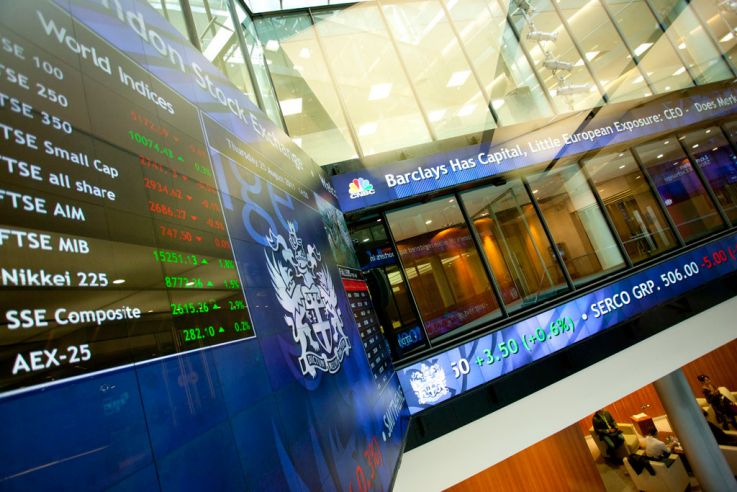
Technical Approach to Trading and Investing. A brief introduction from a famous and excellent book on the subject.
As Freud mapped the human psyche, so have Edwards and Magee mapped the human mind and emotions as expressed in the financial markets. Not only did they produce a definitive map, they also produced a methodology for interpreting and profiting from the behavior of men and markets.
Few human activities have been so exhaustively studied during the past century, from so many angles and by so many different sorts of people, as has the buying and selling of corporate securities. The rewards which the stock market holds out to those who read it right are enormous; the penalties it exacts from careless, dozing, or “unlucky” investors are calamitous. No wonder it has attracted some of the world’s most astute accountants, analysts, and researchers, along with a motley crew of eccentrics, mystics, and “hunch players,” and a multitude of just ordinary hopeful citizens.
Able brains have sought, and continue constantly to seek, for safe and sure methods of appraising the state and trend of the market, of discovering the right stock to buy and the right time to buy it. This intensive research has not been fruitless – far from it. There are a great many successful investors and speculators (using the word in its true sense, which is without opprobrium) who, by one road or another, have acquired the necessary insight into the forces with which they deal and the judgment, the forethought, and the all important self-discipline to deal with them profitably.
In the course of years of stock market study, two quite distinct schools of thought have arisen, two radically different methods of arriving at the answers to the trader’s problem of what and when. In the parlance of “the Street,” one of these is commonly referred to as the fundamental or statistical, and the other as the technical. (In recent years a third approach, the cyclical, has made rapid progress and, although still beset by a “lunatic fringe,” it promises to contribute a great deal to our understanding of economic trends.) The stock market fundamentalist depends on statistics.
He examines the auditors’ reports, the profit-and-loss statements, the quarterly balance sheets, the dividend records, and policies of the companies whose shares he has under observation. He analyzes sales data, managerial ability, plant capacity, the competition. He turns to bank and treasury reports, production indexes, price statistics, and crop forecasts to gauge the state of business in general, and reads the daily news carefully to arrive at an estimate of future business conditions. Taking all these into account, he evaluates his stock; if it is selling currently below his appraisal, he regards it as a buy.
More than 100 years ago, in Springfield, MA, there lived a man named Charles H. Dow. He was one of the editors of a great newspaper, The Springfield Republican. When he left Springfield, it was to establish another great newspaper, The Wall Street Journal. Charles Dow also laid the foundation for a new approach to stock market problems. In 1884, he made up an average of the daily closing prices of 11 important stocks, 9 of which were rails, and recorded the fluctuations of this average.
He believed that the judgment of the investing public, as reflected in the movements of stock prices, represented an evaluation of the future probabilities affecting the various industries. He saw in his average a tool for predicting business conditions many months ahead. This was true because those who bought and sold these stocks included people intimately acquainted with the industrial situation from every angle.
Dow reasoned that the price of a security, as determined by a free competitive market, represented the composite knowledge and appraisal of everyone interested in that security – financiers, officers of the company, investors, employees, customers – everyone, in fact, who might be buying or selling stock.

The term “technical,” in its application to the stock market, has come to have a very special meaning, quite different from its ordinary dictionary definition. It refers to the study of the action of the market itself as opposed to the study of the goods in which the market deals. Technical Analysis is the science of recording, usually in graphic form, the actual history of trading (price changes, volume of transactions, etc.) in a certain stock or in “the Averages” and then deducing from that pictured history the probable future trend.
Chart formations are the language of the market, telling us that this stock is in its death throes; that stock is on a rocket to the moon; that a life and death battle is being waged in this issue; and in that other, the buyers have defeated the sellers and are breaking away. They are the depiction of multifarious human actions bearing on a single variable (price).
On price converge a galaxy of influences: fear, greed, desire, cunning, malice, deceit, naiveté, earnings estimates, broker need for income, gullibility, professional money managers’ need for performance and job security, supply and demand of stocks, monetary liquidity and money flow, self-destructiveness, passivity, trap setting, manipulation, blind arrogance, conspiracy and fraud and double dealing, phases of the moon and sun spots, economic cycles and beliefs about them, public mood, and the indomitable human need to be right.
From the book Technical Analysis of Stock Trends by ROBERT D. EDWARDS JOHN MAGEE W.H.C. BASSETTI
All you need o know about trading, finance and market news and analysis in a PDF links file updated with thousand of books, software, courses, seminar, charts and quotes. Through master trading links, you’ll be able to discover a lot of interesting website, useful resources for your knowledge and your learning activities.
You can download the PDF file and keep it on your computer, tablet or mobile and use it as a reference guide when you need highly specialized information, material, stocks analysis and market news. You will certainly enjoy this complete and rich PDF file of master top trading links. You will be able to expanded your capabilities and brought in a lot of great finance research and trading ideas. Always remember that investigating the different links can improve a lot your learning possbilities.
All you need to know about finance and trading Trading-links-by-daimon-traders.pdf
To find out more about trading and finance you can also read:
Jesse Livermore trading lessons

